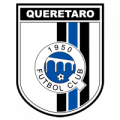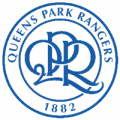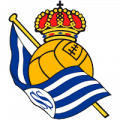The game of football had been established in England long before the official foundation of HSV in 1887. Sheffield F.C, Liverpool St. Helens and Edinburgh Academical were all created three decades before Hamburg, with the respective clubs coming into existence in 1857.
With the continuation of historic trade routes that had brought men from all over the world to Hamburg’s ports continuing into the latter part of the 19th century, it was no surprise that dock workers and sailors from England introduced their game to Hanseatic shores at every opportunity.
The idea of “football” was, at first, an alien concept to the German natives. Referred to commonly as “the game of the foot”, it was frowned upon by traditionalists who engaged in other activities rather than what was viewed as a peasant sport. However, more and more young people began engaging with the game and developing an interest, and consequently local businessmen and authorities were beginning to take note.
The very early existence of Hamburger Sport-Verein in its current entity links not to the emergence and establishment of association football, but rather to a significant merger that occurred in 1887.
On the 29th of September, Der Hohenfelder Sportclub and the Wandsbek-Marienthaler Sportclub combined to form SC Germania, which HSV recognises as its own date of origin in its official statute. The aforementioned sporting associations were track and field rather than ball sport, but nevertheless this is how a lot of modern day football clubs started, as societies that represented the cities at sports rather than specific football clubs.
A year later, on June 1st 1888, the second subdivision of the modern day Hamburger SportVerein was founded in the form of Hamburger SC 1888. Although the story has it that students formed the club, it is more accurate to suggest that the teacher of Wilhelm-Gymnasium, a Dr. Wilms, was the man who created the team as he was the man who introduced the game of football to his students. The HSC had its first site on the Moorweide by the train station at Dammtor, while SC Germania leased a meadow in Wandsbeck. Every Sunday the footballers grabbed slats to contrast makeshift gates and shelters before games while later, the pitch was staked with ropes.
SC Germania continued to be recognised as an athletics club from 1887-1891, until the aforementioned Englishmen joined the club and introduced the sport of football to them. Whether they had any influence on HSC 1888 in unknown, but no English influence is recorded. On the 20th October, 1894, the Hamburg-Altona football association was formed, which was significant as it is the oldest football association outside of the capital Berlin. SC Germania was able to claim the title unbeaten in the 1895/96 season, and were even better in defending the title during the following season of 1896/97.
Meanwhile, ‘HFC’ or ’88’ as they were more commonly known, had moved from their spot at the willow tree bog to a court of the Star Hill rink. Between 1895 and 1897, the Hamburger Sportclub was twinned with a new association name FC Viktoria 95 (formed, as suggested, in 1895) before returning to their independent state in the latter year.
In 1900, the Deutscher Fußball-Bund was formed, and among its 86 founding members were SC Germania and Hamburger SC 1888. Germania continued to dominate, securing championships in the Hamburg-Altona association in 1901, 1902 and 1905. Germania received their own playing field for the first time in 1903, at a racetrack located near the Kamper mill, and the team was moving for strength to strength.
At national level Germania were competitive too, reaching the semi-final of the DFB Pokal in 1904(then called the German football championship, in its very original 86 team format) but lost out to Britannia Berlin by a scoreline of 3-1.
It is worth noting that Britannia Berlin were a similar story to SC Germania, founded in 1892 and having English sports introduced by sailors including rugby and cricket, before becoming very powerful at national level. The final of the 1904 championship was not played, as a protest by Karlsruher FV meant the tournament had to be annulled. A similar thing had been ignored by the DFB for financial reason in 1903, but this time the argument that the games should be played on neutral ground, causing some KFV players to miss their game with Britannia Berlin, was deemed reason enough to abort the tournament.
The first German football championship game was held in Altona at the Exerzierwiese on May 31st, 1903. The game struggled to attract a crowd, surprisingly, as only 750 spectators watched the match. Football was clearly going to take time to entrench itself in German culture and fully captivate the hearts of the people, but in Hamburg big steps were being taken in advancing the movement.
The Norddeutsche Football Association was founded after the 1905 season, and this started the decline of SC Germania as they lost a lot of players to more competitive and established clubs from the North. The idea of the new association was to take the sport forward in the same way as had been achieved in other parts of Germany, but this worked against the less established clubs as the league quickly became oligopolised.
The third and final constitution of the Hamburger Sport-Verein was founded on the 3rd of June 1906, named FC Falke 1906 Zusammenschlossen. The name, literally translated, means “Football Club [of the] Falcons and Castles together”, and was created by secondary school students in Hamburg-Eppendorf. Initially, the club lease a field in Grindelberg as their new home was being constructed at Voßberg to be completed in 1908, but the facility being built was not up to NFA (North German Football Association) standards so they were denied entry to the league.
This almost destroyed Falke 06 before they had even properly begun, but a new sports facility was constructed for them in Stellingen, which caused young players to flock (no pun intended) back to the club. They re-applied to the NFA and were granted permission, but remained a small club compared to SC Germania and Hamburger SC 1888.
A huge moment in HSV history happened in 1910, when Hamburger SC leased a sports field in the Rothenblaum area of Hamburg (named the Sportplatz am Rothenbaum), a place that would later become the site of some of the current club’s biggest achievements.
On New Years Day of 1912, HSC 1888 secured the services of Eintracht Braunschweig player Otto Harder, a man who would become one of HSV’s biggest players. Despite this (he was only 20), Hamburger SC had a very poor season in 1912/13, and although they recovered slightly the following year, it was time for war in Germany, and there was no championship contested. On February 26th, 1914, Hamburger SC 1888 changed their name to Hamburger SV 1888, looking a little bit more like how we know it today.
SC Germania continued their decline into the war, and FC Falke continued to be a minor club in the NFA, but the nation paused for war and many players were rushed off to the trenches, threatening the very existence of some clubs. Football took a back seat at this time, but in the nearly 30 years covered, a lot of what forms the current Hamburger Sportverein was taking shape.
In the next instalment, we will be taking a look at what happened to the clubs during World War One, and how it impacted an important event leading to the formation of one of Germany’s most famous clubs.










































